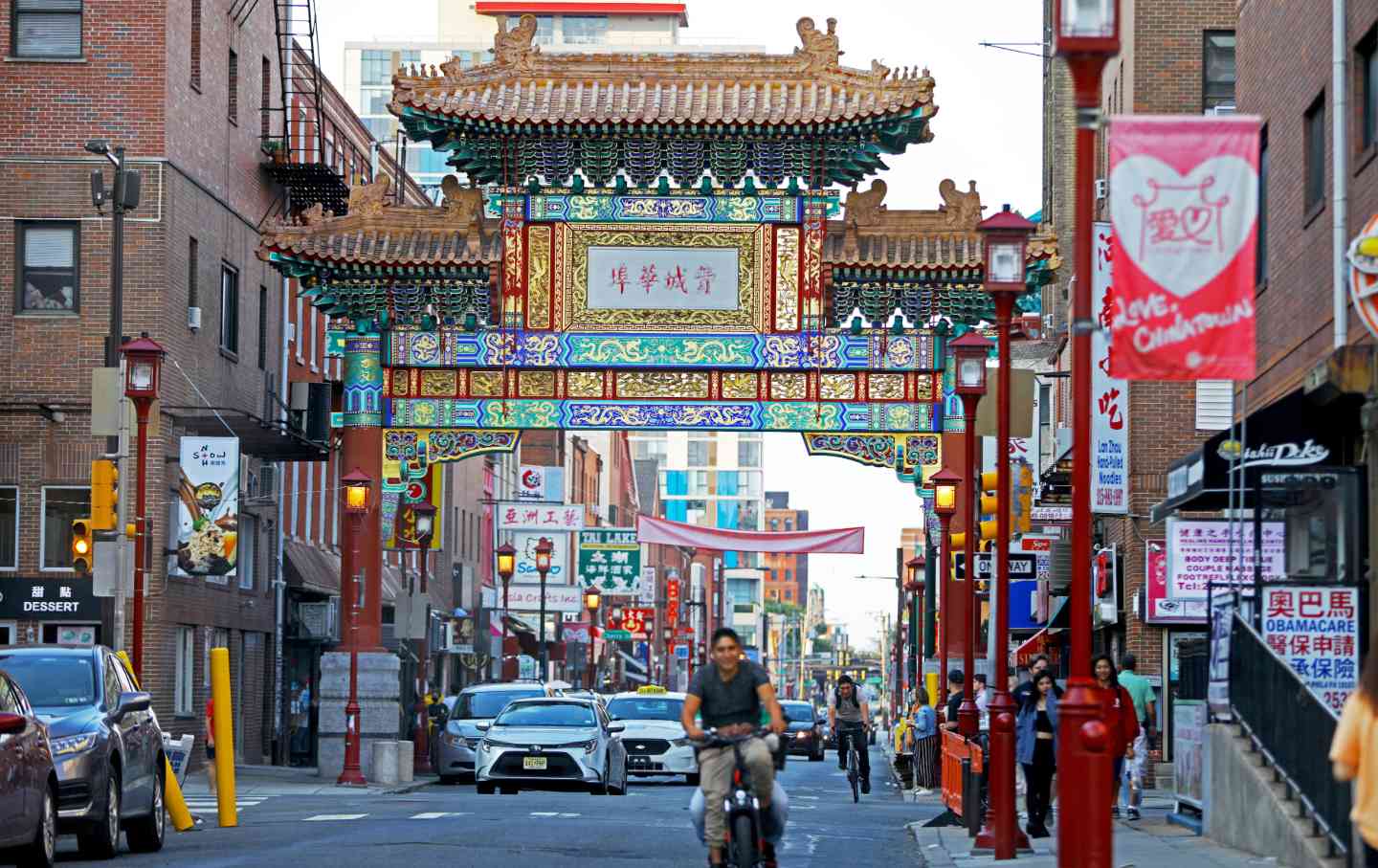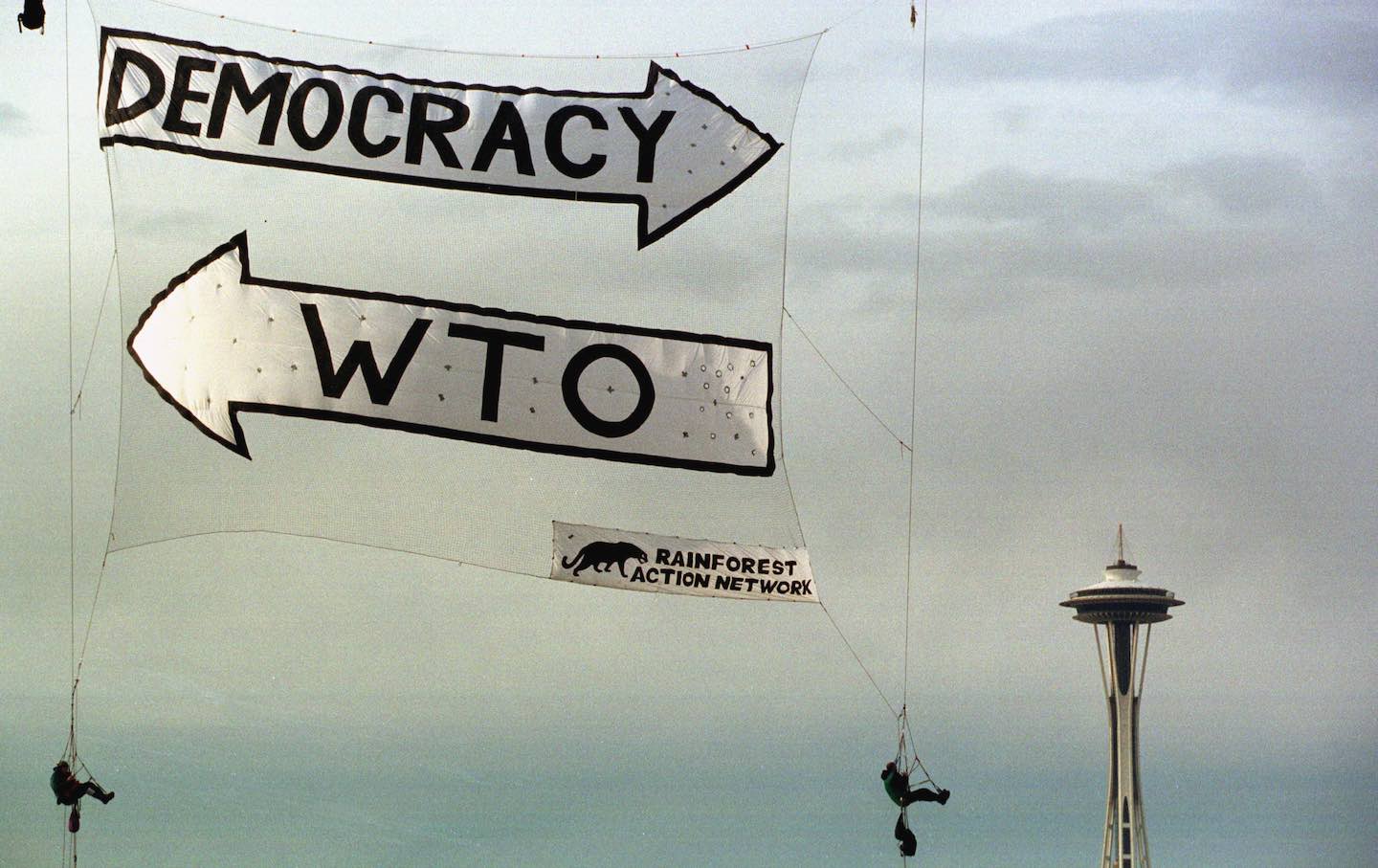Los Angeles Is Now the Country’s Leading Union Town
The West Coast capital, once famous for hostility to organized labor, emerges as the epicenter of national strike action.

When United Teachers Los Angeles (UTLA) went out on strike in 2019, it sent a shock wave through the nation’s second-largest school district and second-largest city. But in the years since Los Angeles has become the forefront of a nationwide increase in labor militancy, with data from the Bureau of Labor Statistics and an analysis of area union membership suggesting that roughly half the American workers who have taken to the picket lines in large strikes in 2023 have done so in Los Angeles.
Since the beginning of the year, workers here have struck in dozens of hotels, the City of Los Angeles, the Los Angeles Unified School District, and the city’s crucial entertainment industry. Strike action in Los Angeles has helped drive the largest surge of national strike activity since 2018 and 2019, when teachers and school employees nationwide—including Los Angeles teachers—took to picket lines in large strikes that rocked many cities and states.
According to experts, local union leaders, and rank-and-file union members, that Los Angeles is now taking center stage is no surprise, with many citing a mixture of the city’s affordability crisis, stagnant wages amidst soaring corporate profits, and renewed confidence in union strength. That increase in militance has in turn increased pressure on local and statewide Democratic officials to support organized labor with more than just lip service. Recently, municipal workers in Los Angeles accused Mayor Karen Bass’s administration of failing to negotiate in good faith, leading to a one-day strike. Other Democratic officials have scrambled to show support, including introduction of a new bill to allow striking workers to collect unemployment and city intervention to fine NBCUniversal for illegally cutting trees to eliminate shade on picket lines.
But these challenges have provided an opportunity for solidarity and coalition building: one that unions are seizing.
“The last year has witnessed an extraordinary upsurge in labor mobilization and labor action here in Los Angeles,” according to Kent Wong, director of UCLA’s Labor Center. “Los Angeles has emerged as a focal point of labor activism in part because of all the major cities in the country, Los Angeles has the biggest disparity in wealth between the rich and the poor.”
Los Angeles’s soaring affordability crisis is a key piece of the surge in strike action, with Los Angeles ranking among the least affordable cities for homeowners and 56 percent of renters in Los Angeles County qualifying as rent-burdened. Workers and union leaders describe difficult choices made by workers, with Brenden Gallagher and Nick Adams—both writers on strike with the Writers’ Guild of America West—saying that many writers are forced into hours-long commutes to Ojai and the Antelope Valley, with some considering whether they’ll be forced to leave Southern California altogether.
Adams, an award-winning writer with credits on popular shows like New Girl and Bojack Horseman, says that writers are forced to make tough calls. “You’re like, how far do I move,” says Adams. “Am I still in Los Angeles anymore, should I just pack up and move to Phoenix at some point?”
For 15,000 hospitality workers on rolling strikes with UNITE HERE Local 11, housing, alongside a post-pandemic employer push to squeeze workers, is also a key issue, with UNITE HERE placing housing at the forefront of their bargaining demands. According to Kurt Petersen, copresident of UNITE HERE Local 11, the challenge facing hospitality workers is one facing all Angelenos. “The fundamental question facing all of us, union and not union, is who is going to be able to live in Los Angeles?”
For hospitality workers who were laid off—according to Petersen, 95 percent of UNITE HERE Local 11’s members were out of work during the height of coronavirus shutdowns—the hospitality industry has come roaring back, bit it hasn’t brought them with it. Instead, hotels have eliminated daily cleanings and reduced workforces. “We asked them, pleaded with them, and demanded that they [not] exploit the pandemic,” said Petersen. “[But] they saw a silver lining, and they decided they would take advantage of the pandemic and try to force workers to do more work.”
But even though workers are feeling the squeeze, it isn’t the sole reason they’re choosing to turn to strike action as a solution. Wong believes that a history of diverse, multiracial membership and leadership reflecting the city’s working class has proven a strength for Los Angeles labor. Many key unions and labor organizations, such as UNITE HERE Local 11, UTLA, and the Los Angeles Federation of Labor boast women of color in key leadership positions. In addition, he believes that deliberate political choices have helped unions build the strength to demand more.
“Key unions here in Los Angeles have embraced a much stronger vision of social justice unionism,” says Wong, describing Los Angeles labor as working “at the forefront” of movements for social justice, from fights for the undocumented to the movement for Black lives.
Successful strike actions, like those led by UTLA in 2019 and early this year, have also helped embolden workers. “The teachers [are the] ones who led the way in this, and I think gave all of us confidence that we could do way more than we ever thought,” says Petersen. The result, according to Petersen, is unlike anything he’s seen in his 30 years in Los Angeles, with solidarity at an “all-time high.”
For Mark Ramos, a social studies teacher at Benjamin Franklin Senior High School and a member of UTLA’s Board, the kind of solidarity Petersen describes was an “easy choice.” When Los Angeles Unified School District support staff struck earlier this year, teachers and professionals in UTLA joined them on the picket lines in what Ramos describes as a solidarity strike, helping secure large wage increases for both support staff and teachers.
When Ramos showed up to a picket line with supplies the first morning teachers and support staff struck together, some support staff almost cried. “Some of the Local 99 folks are making $25,000 a year, and for them, going out on a three-day strike might mean that they go unhoused,” says Ramos. “For us to be there for them, that was the moment where we became more galvanized than we ever were.”
Their strike, which secured a 30 percent wage increase for members of SEIU Local 99 along with retroactive pay and a bonus, was a potential game changer in a city where even a small change in income can impact housing security. “Now, folks may be able to live in the areas of the schools that they work in, which could be life-changing for [them].”
The strike wave comes at what workers describe as a tipping point, both for the city and, in some cases, their industries. For some members of WGA, their strike feels, as both Adams and Gallagher put it, “existential,” with pressure placed on writers as a result of the rise of streaming services and the fraying studio system. Opportunities for secure work are few and far between, especially for those still trying to break into the industry, and abrupt cancellations from streaming services introduce new unpredictability for writers seeking steady work. Once stable staff jobs and more secure renewals are under threat of growing replacement with “minirooms,” in which employers reduce writing-room size to three or fewer writers—less than half of what some say is the industry standard.
Popular
“swipe left below to view more authors”Swipe →Gallagher, who wrote for the Netflix series Warrior Nun for two seasons before it was canceled last year, spent months searching for work before the strike ground the industry to a halt. Writers fill much of the time between staff positions, according to Gallagher, in unpaid development of scripts and pitch decks, hoping that a studio or network will purchase it. “I have to get my next staff job, and that staff job could take years to get,” says Gallagher. “Whenever your show is canceled…you feel like you’re playing musical chairs.”
The surge of worker militancy seems likely to continue. On August 24, 85,000 workers at Kaiser Permanente—a national health network headquartered in Southern California, and once lauded for its labor-management partnership—announced that they would be voting to authorize a strike, with the Coalition of Kaiser Permanente Unions alleging that Kaiser is bargaining in bad faith. Kaiser workers authorized a strike in 2021 before reaching a tentative agreement on a new contract. The same day, UNITE HERE Local 11 called for a citywide convention boycott, escalating their campaign in the hospitality industry.
Approaching contract expirations also loom for both UPTE-CWA 9119 and AFSCME 3299, large union locals representing staff in the University of California system. Both unions have a history of militant sympathy action, with multiple strikes by both in 2018 and ’19. In preparation for bargaining, UPTE-CWA has planned town halls discussing the UC system’s financial position, and Los Angeles members have taken to WGA picket lines in solidarity, with union leaders drawing connections between studio executives and university administrators.
But for those taking action now, like Mark Ramos, their fight is both about the fate of their industries, and the fate of the city that they live and work in. “This is a battle for who can stay here,” says Ramos. “It’s going to change what the population looks like in Los Angeles, and it’ll change what our schools look like in Los Angeles, and who is even able to have access to public and free education.”
More from The Nation

Yale Students Voted to Divest, but What’s Next is Unclear Yale Students Voted to Divest, but What’s Next is Unclear
The referendum calls on the school to divest its $41 billion endowment from military weapons manufacturing firms, yet the power to do so is in the hands of the board of trustees.

The “Save Chinatown” Coalition Goes on the Defensive in Philadelphia The “Save Chinatown” Coalition Goes on the Defensive in Philadelphia
The construction of a new basketball arena threatens to fill the neighborhood with more traffic and raise rents.

Human Rights for Everyone Human Rights for Everyone
December 10 is Human Rights Day, commemorating the anniversary of the Universal Declaration of Human Rights (UDHR), one of the world's most groundbreaking global pledges.

25 Years Ago, the Battle of Seattle Showed Us What Democracy Looks Like 25 Years Ago, the Battle of Seattle Showed Us What Democracy Looks Like
The protests against the WTO Conference in 1999 were short-lived. But their legacy has reverberated through American political life ever since.

Hollywood’s Vocal Actors Union Goes Silent on a Gaza Ceasefire Hollywood’s Vocal Actors Union Goes Silent on a Gaza Ceasefire
Amin El Gamal, head of SAG-AFTRA's committee on Middle Eastern and North African members, has advocated for a statement supporting a ceasefire in Gaza—so far without success

The Mirabal Sisters The Mirabal Sisters
Patria, Minerva, and María Teresa Mirabal were sisters from the Dominican Republic who opposed the dictatorship of Rafael Trujillo; they were assassinated on November 25, 1960, und...


